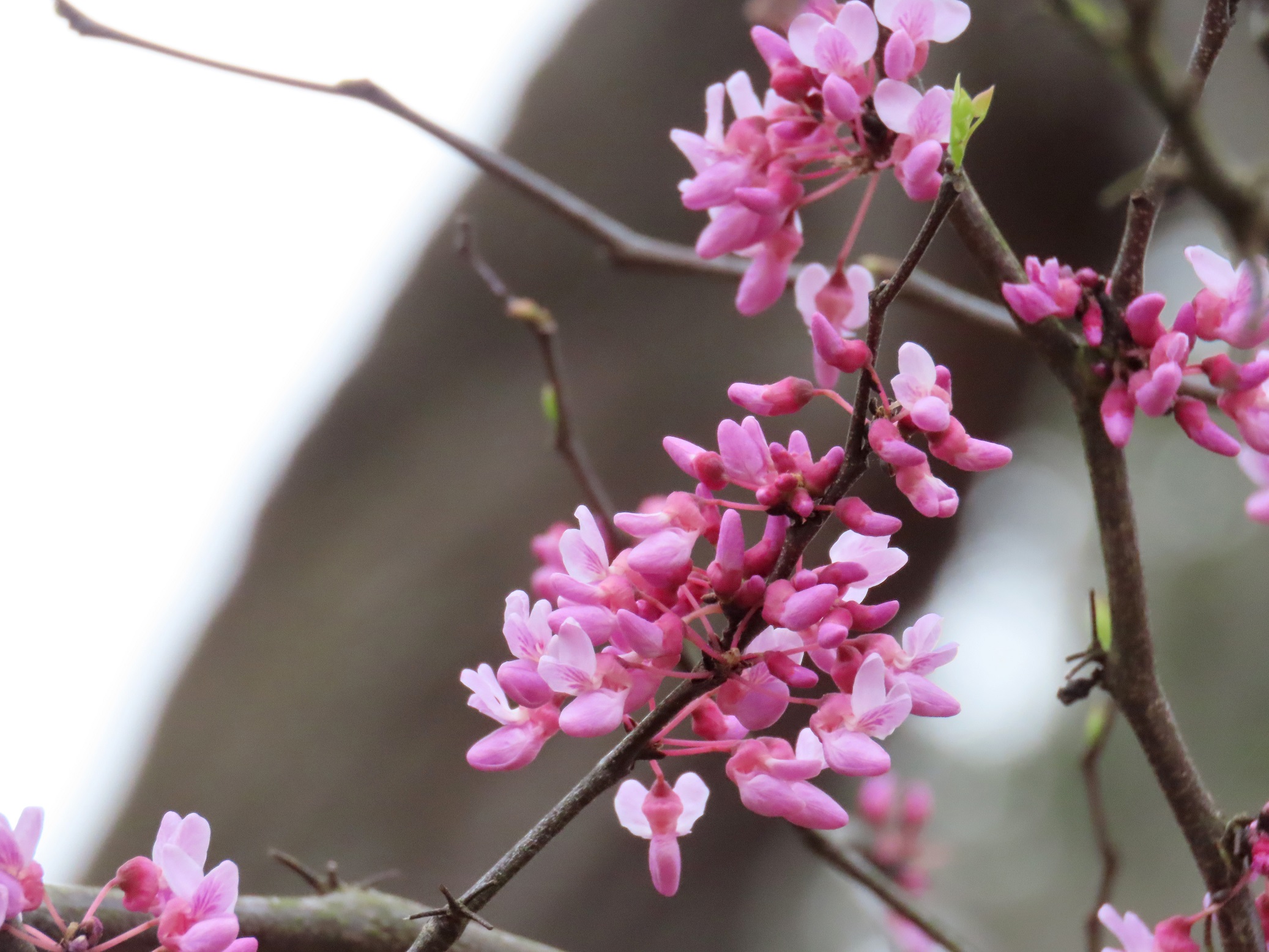
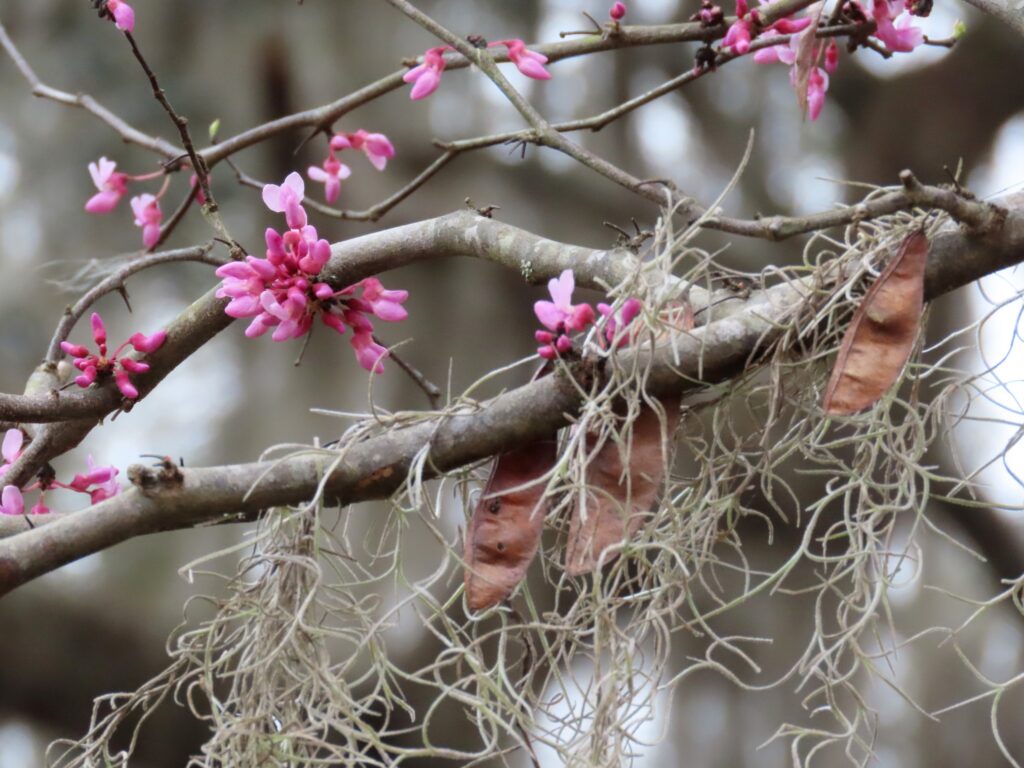
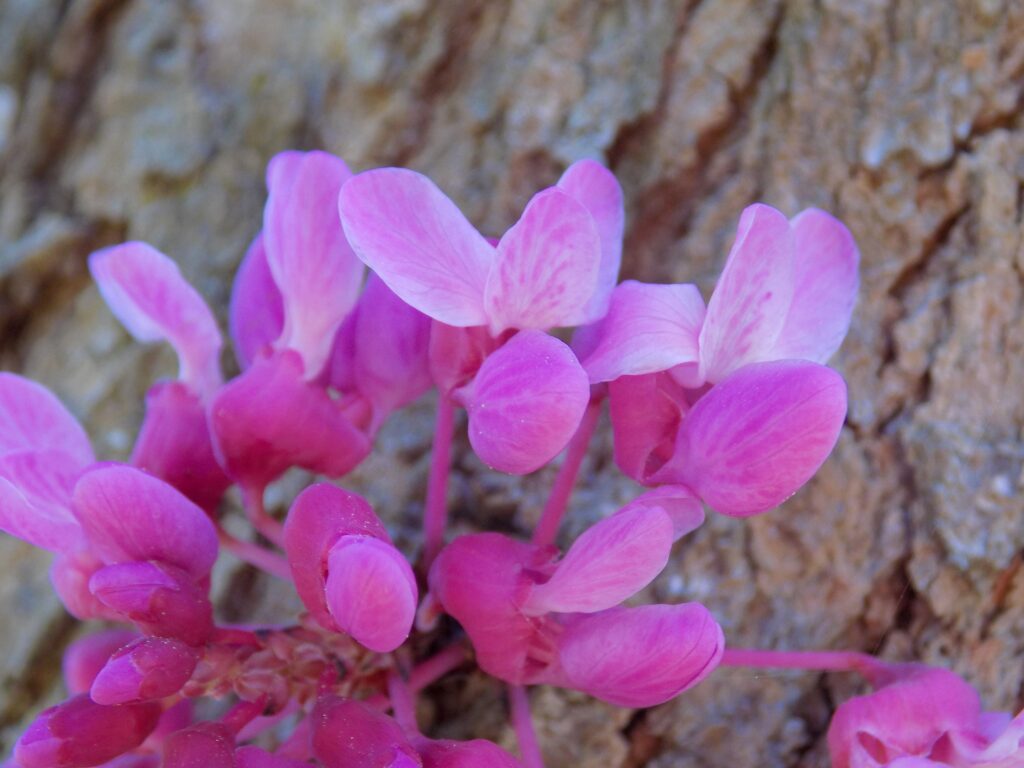
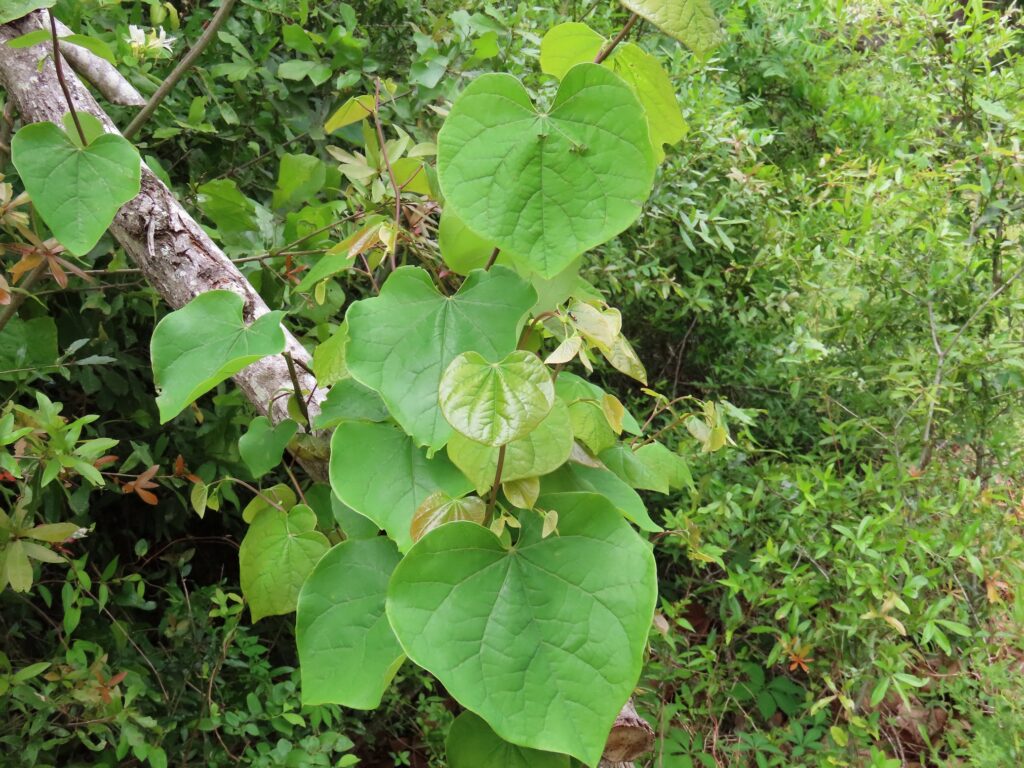
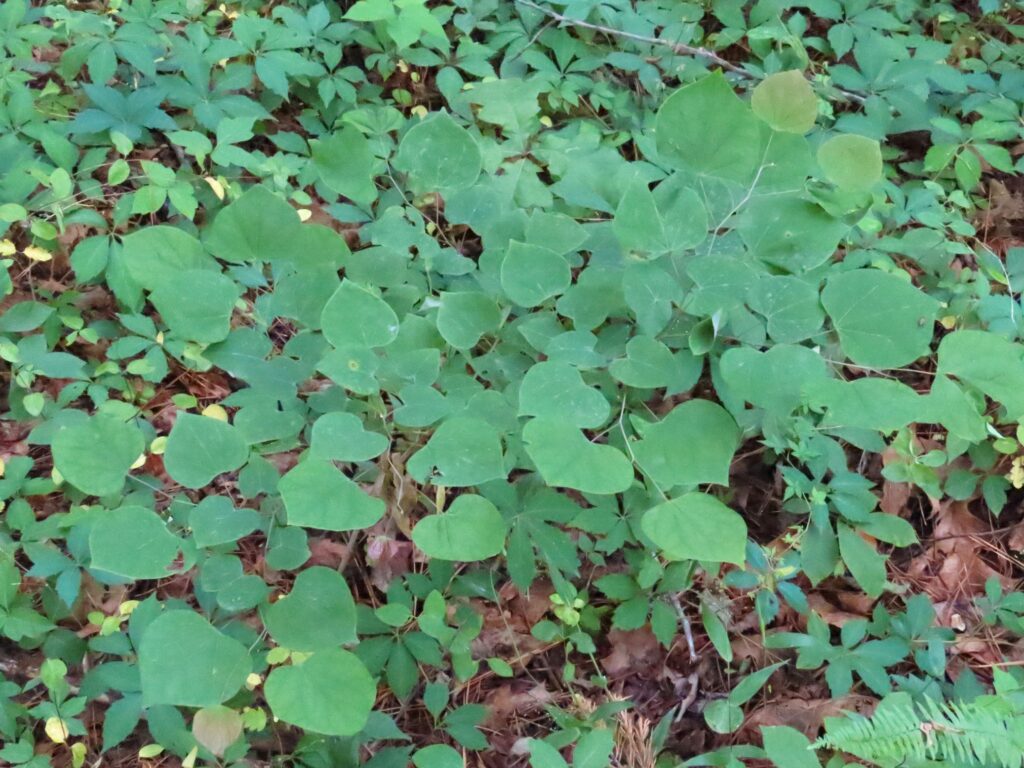
This week for Flora and Fauna Friday we have the black sheep of the bean family, Eastern Redbud (Cercis canadensis).
Redbud is one of our largest native legumes, meaning it’s a member of the bean family. It’s a small tree, growing twenty to thirty feet in height. It’s found throughout the eastern United States and in every corner of South Carolina. Every year at the eve of winter, Redbud graces us with its presence. Smoldering hot-pink flowers burst forth from its bark, setting the leafless tree aglow. Strangely, these flowers emerge not just from the twigs but from the larger stems and even the main trunk of the tree and they appear in dense clusters, sometimes packed so tight that flowers become buried beneath each other. Each individual flower is about a quarter-inch in size with that classic pea-flower shape. The leaves of Redbud emerge after it flowers and grow into palm-sized, heart shaped leaves. The new leaves often appear as lime-green or purple-red in color, especially at the branch tips, before maturing into a uniform verdant shade across the plant.
Redbud has several traits that make in unusual for a legume. One, it’s a full-fledged tree where nearly all of our native legumes are forbs, vines, or shrubs. Two, it is fairly shade tolerant and will even grow in the forest understory, whereas most legumes need full-sun. Three, it does not fix nitrogen. Legumes are renowned for their proclivity towards forming mutualistic relationships with soil bacteria in order to capture atmospheric nitrogen, allowing them to grow well on weathered soils where little else can. Yet, Redbud doesn’t have any special adaptations to do this. Despite its quirkiness, Redbud makes for an excellent native plant for ornamental use in yards and urban landscaping. It will grow well with little maintenance on a wide range of upland soils in a multitude of lighting conditions. When young, it can be pruned as a handsome shrub and, when mature, becomes a broad, arching shade tree. We also can’t forget the stunning profusion of flowers. Redbud is one of the first trees to bloom, usually starting in late February on Edisto Island. Bees and other early pollinators make good use of these flowers too, so they’re not just for show. Redbud is a great addition to most any native landscaping initiative and is commonly planted across South Carolina as a result.